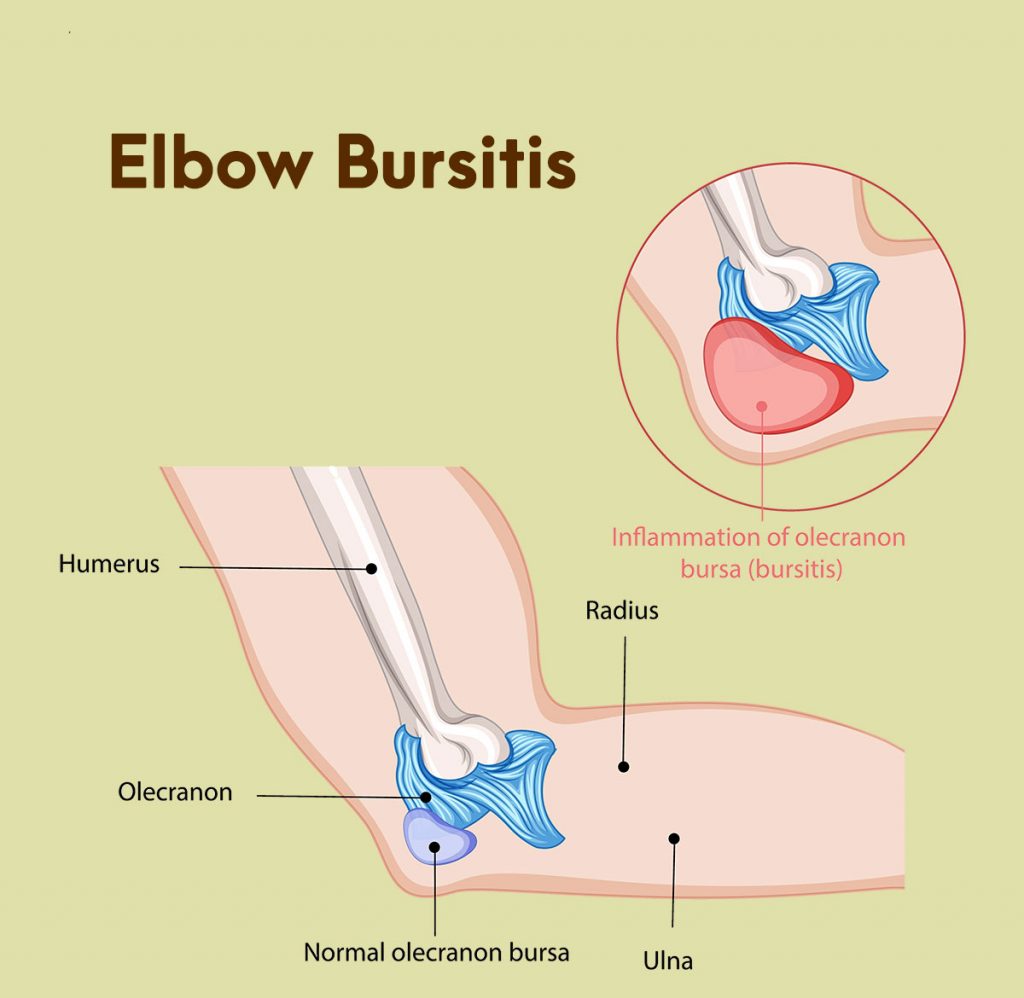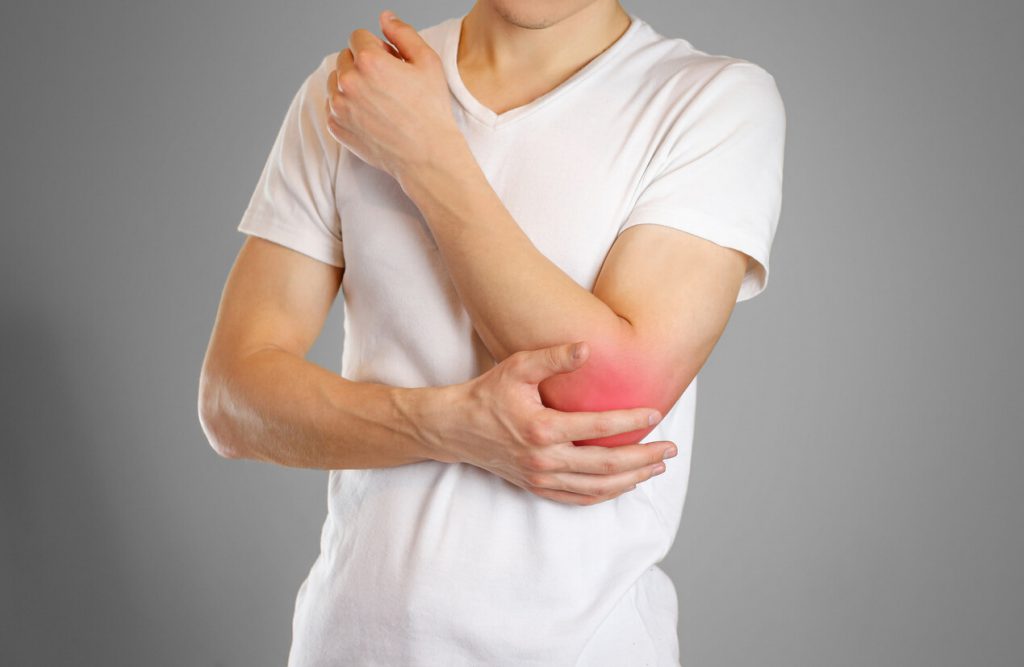Bursitis is a very painful condition that occurs when a bursa is inflamed. Bursae are the small fluid-filled sac-like cavities around joints. Bursa serves as a cushion between the joint bones and the muscles and tendons close to the joints, reducing friction when the joint moves. Anyone can develop this condition, so understanding its causes is important.

Which Joints are Most Susceptible to Bursitis?
There are some joints more susceptible to developing bursitis than others. They include:
- Shoulder
- Elbow
- Hip
- Knee
- Heel
- Base of the big toe
Bursitis is temporarily debilitating. For example, bursitis in the shoulder is very painful and reduces the range of movement of the shoulder joint.
Bursitis causes hip pain on the outside of the hip joint in the upper thigh. A hip bursa is between the hip bone and the tendon that passes over the hip’s bony prominence. Since the hip tendon moves with each step, the pain is usually intense when doing something as normal as walking.
The same kind of pain and limitations of movement are experienced in other joints, like bursitis of the knee and bursitis of the foot. No matter where bursitis occurs, the joint is swollen and red, painful, and warm to the touch.
What Causes Bursitis?
The causes of chronic bursitis are the following:
- repetitive movements, i.e., lifting items at work, playing sports, leaning on elbows at a desk, etc.
- joint overuse
- injury
- inflammatory disease, like gout or rheumatoid arthritis
- infection
- certain behaviors, like not stretching before exercise or the way a person walks
- joint abnormalities
- surgery.

Some people may experience bursitis once and never have it again. Other people have repeated episodes. A lot has to do with the specific bursitis causes. A patient can change behaviors to lessen repetitive movements, but cannot eliminate rheumatoid arthritis or an inherited joint abnormality.
Bursitis versus Arthritis
A common question is: Can bursitis cause arthritis? The short answer is, “No.” Arthritis is a joint inflammation with deterioration of the bone and cartilage. Rheumatoid arthritis, in particular, affects the synovial membrane (lining) in the joint. Joint damage from arthritis is one of the bursitis causes.
However, bursitis is an inflammation of the bursa and not of bone, cartilage or other joint tissues. Therefore, bursitis does not cause arthritis.
Treating Bursitis
In many cases, bursitis is easily treated by the patient. They include avoiding the repetitive activity that caused the bursitis until the bursa heals, applying hot and cold compresses and taking anti-inflammatory (NSAIDs) medications. Resting the joint experiencing the pain and using braces or splints to limit movement are also recommended.

However, in some cases, a physician may need to inject more powerful corticosteroids directly into the joint for maximum pain relief. The physician may also order physical therapy or occupational therapy. If the bursitis is due to infection, antibiotics are prescribed.
In rare cases, a bursectomy is performed. It is a surgical procedure to remove an infected bursa. Bursitis usually improves within days or weeks, though it can take longer. The key is to begin treating it as soon as possible.